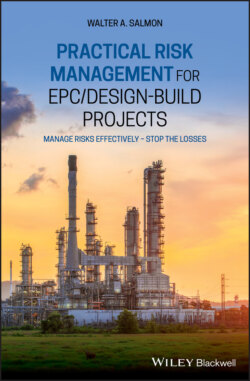Читать книгу Practical Risk Management for EPC / Design-Build Projects - Walter A. Salmon - Страница 5
Foreword
ОглавлениеWithin any jurisdiction there are cyclical deviations in the type of and investment in major projects that are driven by investment priorities, political mandates and corporate strategies. However, at a global level there has, and will continue to be, huge investment. In 2018, the investment in major projects was around $4 trillion and, by all accounts, this investment will increase significantly year on year in an attempt to service the world's rapidly expanding population.
The procurement method on these projects varies but, in the main, the risk of both design and construction is passed to the contracting team either through a design and build, EPC or an EPC variant framework. That is all well and good, but the reality of the procurement process is that there is often a total disconnect between those that draft the contract and those that deliver the project. The contract is the single most important document on a project and in theory creates a platform of certainty, allowing those parties to it to organise and plan. However, so much of the focus in contracts is on risk allocation and risk consequence. If one asks lawyers the sorts of things that are most important on a major project, they will say things such as limitation of liability, price, termination rights and so on. However, if one asks the project team what things are most important, they may say things like reaching and maintaining a consensus around scope, having clarity as to the responsibility of the parties and good communication lines. In other words, in the eyes of the project team, what drives success in projects is about relationships and underlying governance, not management of risk consequence.
I know of a number of very good books on the subject of EPC contracts and major projects, but by and large these are written by lawyers for lawyers, and so the focus tends to be on the sorts of legal issues I identified above, sometimes with practical advice obtained vicariously. The unique offering of this book is that it purposefully focuses away from contract interpretation and legalese towards navigating the reader through a path to understanding the issues and solutions on live projects from the perspective of someone who has been there and seen it many times over. The author's experience, working for over 40 years at the centre of major projects across various sectors for some of the world's biggest companies, has been methodically and logically distilled into a treasure chest of wisdom. The book clearly sets out his understanding and interpretation of risk and putative problems. It explains in great detail all of the key roles on major projects and how those roles can and should interface successfully. Throughout the chapters, it offers practical tips and guidance for navigating a route to a successful project, or placing the contractor in the best possible position when problems arise.
The book will be of great use to contractors, project managers, employers and lawyers. It provides insight for those responsible for managing projects, those who wish to properly understand the various roles, interfaces and risks that need to be considered, and to lawyers who wish to gain a better understanding of how major projects operate and what adjustments to drafting might be taken, or live project advice might be given, to avoid or mitigate risk. If even part of the guidance given in this book is put into practice, I have little doubt that the incidence of disputes would dramatically reduce, as would the negative impact of risks on the contractor's profitability.
James Pickavance
Partner – Jones Day
